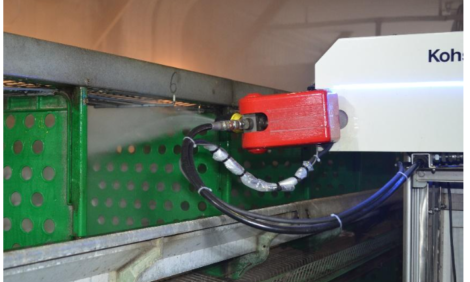



AAAP: Castellaniella in broiler breeders
Castellaniella has a clinical presentation similar to fowl cholera[Excerpts of a presentation by Tiffani Allen, Yi-Chen Luo, Jenny Nicholds, and Grazieli Maboni, Poultry Diagnostic and Research Center, University of Georgia, during the 2024 conference of the American Association of Avian Pathologists]
Castellaniella is a Gram-negative bacterium commonly isolated from
soil. Before 2015, Castellaniella had not been associated with mortality
in animals until reported as a causative agent of suppurative inflammatory
disease in rabbits. Beginning in 2018, the Poultry Diagnostic and Research
Center (PDRC), University of Georgia, repeatedly isolated Castellaniella
from 19 cases in commercial broiler breeders. In all cases, a combination of
swollen wattles, lameness, and/or mortality were observed, presenting similarly
to chronic fowl cholera caused by Pasteurella multocida. Despite this
clinical presentation, isolates were identified as Castellaniella spp.
Prior to this study, no cases of Castellaniella had been documented in any poultry species. The purpose of this study was to provide a comprehensive phenotypic characterization of Castellaniella associated with clinical disease in chickens.
High MIC (minimum inhibitory concentrations) values were obtained for antibiotics: Ceftiofur (18/18, MIC ≥4), clindamycin (18/18, MIC >4), erythromycin (18/18, MIC >4), novobiocin (18/18, MIC >4), penicillin (18/18, MIC ≥8), and tylosin (18/18, MIC >20), indicating antimicrobial resistance. Low MIC values were obtained for enrofloxacin (17/18, MIC ≤0.25), florfenicol (18/18, MIC ≤1), neomycin 18/18, MIC<2), spectinomycin (17/18, MIC ≤16), and tetracycline (18/18, MIC ≤4), indicating antimicrobial susceptibility.
This is the first known study
documenting antimicrobial susceptibility profiles from clinical avian isolates.
Based on this data, tetracyclines are recommended in treatment of clinical
cases while penicillin should be avoided due to a potential mechanism of
intrinsic resistance. With the emergence of drug resistant bacteria in
veterinary medicine, increased pressure has arisen to decrease antimicrobial
use.










